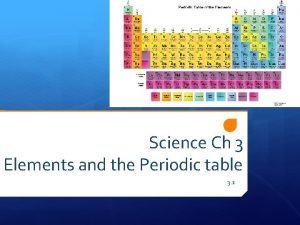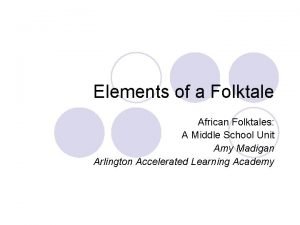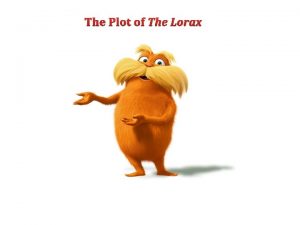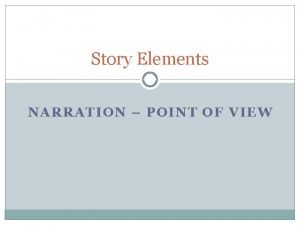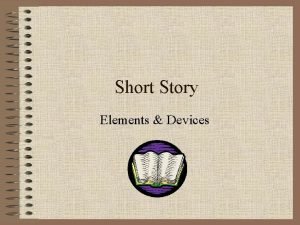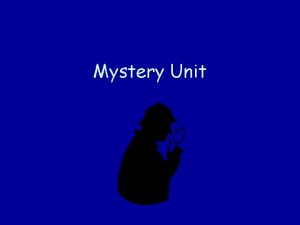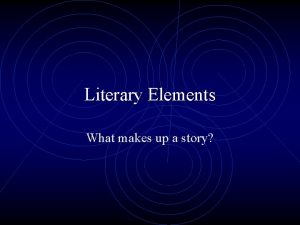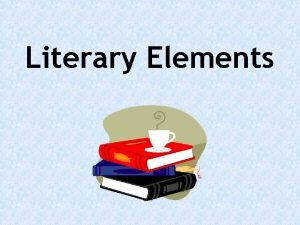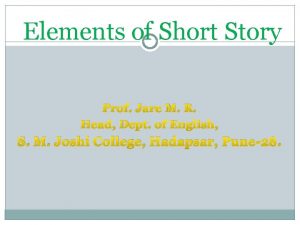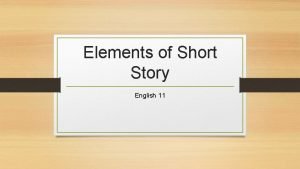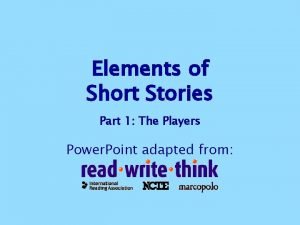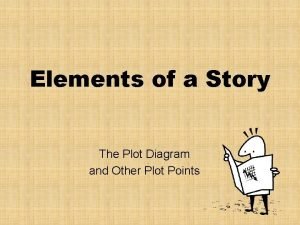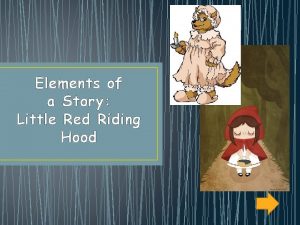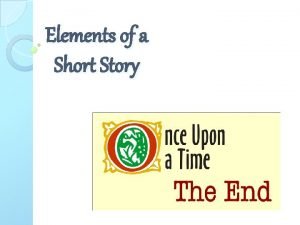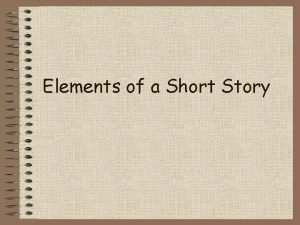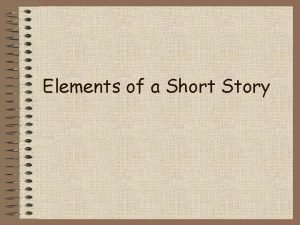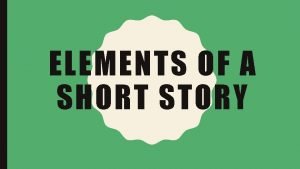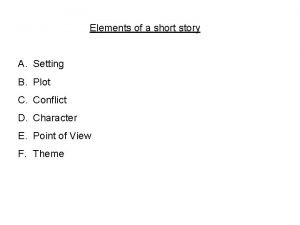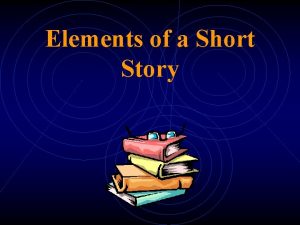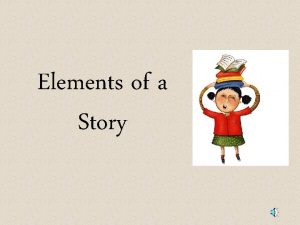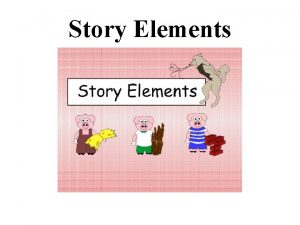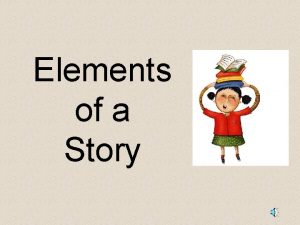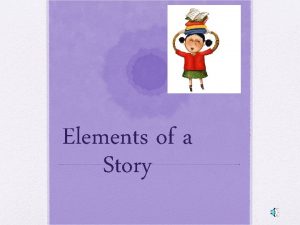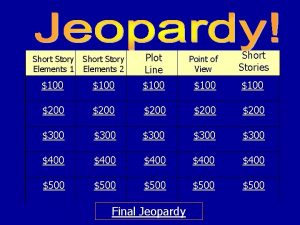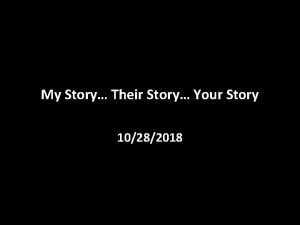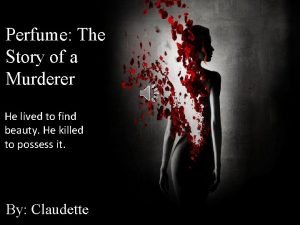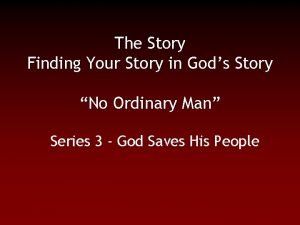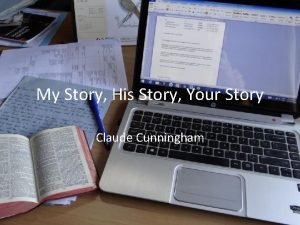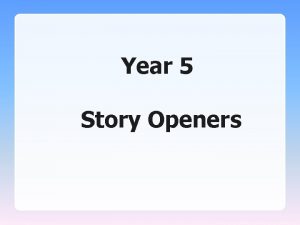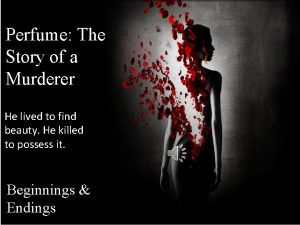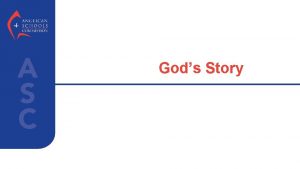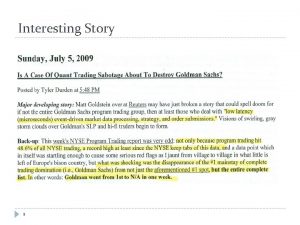Elements of a Story Elements of a Story

























- Slides: 25

Elements of a Story

Elements of a Story: • • • Setting – The time and place a story takes place. Characters – the people, animals or creatures in a story. Plot – the series of events that make up a story. Conflict – a problem or struggle between two people, things or ideas. Climax – the exciting part

Setting

Setting • The setting describes where an when the story takes place. • It helps build background and create images in the mind. • It helps set the tone or mood of the story. Details can describe: ü Time of day ü Time of year ü Time in History ü Scenery ü Weather ü Location

Using the Five Senses • A good setting helps the reader visualize the places in the story. • A good author includes descriptions of the setting using the five senses… • • • SIGHT SMELL TASTE FEEL SOUND

Take a Look…Which is better? The castle was beside the water. OR… The waves crashed loudly against the shoreline. The fog lifted lightly and the medieval castle came into view. It was a beautiful site! The fog brushed my face and I could smell the smoke from the fire in the distance and taste the sea salt on my lips.

Your Turn… • On the next slide, there is a picture of a setting. • In your own words, write a detailed description of the setting in your picture. Include many adjectives and don’t forget to include descriptions for each of the five senses: see, hear, feel, smell, taste • Extension: Draw your own setting and then write about it.


Characters

Every story needs Characters… People Animals Or Creatures

The protagonist is the “good guy”

The antagonist is the “bad guy” or force

Characterization is the way in which an author shows the personality of a character Characterization is a technique writers use to make characters “come to life. ”

Character Traits are descriptive adjectives that tell us specific qualities of a character • Honest • Light-hearted • Leader • Expert • Brave • Conceited • Mischievous • Demanding • Thoughtful • Keen • Happy • Disagreeable • Simple • Fancy • Plain • Excited • Studious • Inventive • Creative • Thrilling • Independent • Intelligent • Compassionate • Gentle • Proud • Wild • Messy • Neat • Joyful • Strong • Bright • Courageous • Serious • Funny • Humorous • Sad • Poor • Rich • Tall • Dark • Light • Handsome • Pretty • Ugly • Selfish • Unselfish • Self-confident • Respectful • Considerate • Imaginative • Busy • Patriotic • Fun-loving • Popular • Successful • Responsible • Lazy • Dreamer • Helpful • Simpleminded • Humble • Friendly • Short • Adventurous • Hard-working • Timid • Shy • Bold • Daring • Dainty • Pitiful • Cooperative • Lovable • Prim • Proper • Ambitious • Able • Quiet • Curious • Reserved • Pleasing • Bossy • Witty • Fighter • Tireless • Energetic • Cheerful • Smart • Impulsive • Loyal

Plot

Plot - the events that take place in a story. Every story needs a plot! The plot has different “parts…”

Conflict

Conflict • Conflict is the “battle” between two forces. • Conflict isn’t always bad. . sometimes it helps to create change.

Conflict is the struggle between two forces in a story. Without conflict, there is no plot.

Types of Conflict Character vs Nature Character vs Society Character vs Self

Climax

The climax is the most exciting part!!

The climax of the story is the turning point of the story; the moment when the ultimate suspense reaches its peak. The climax is the problem of the story.

Resolution The solution to the problem is the way the action is resolved. For example, Katie often resolves a conflict by finding a compromise for two fighting characters or helping fix any mistakes she made while switcherooed into someone else. It is important that the resolution fit the rest of the story in tone and creativity and solve all parts of the conflict.

Assignment • The Invisible man/woman. • Lost at sea • Oh! That didn’t go as planned. .
 Components of narrative writing
Components of narrative writing What are performance elements in drama
What are performance elements in drama Overhead allocation
Overhead allocation Hydrosulfuric acid
Hydrosulfuric acid Http //elements.wlonk.com/elements table.htm
Http //elements.wlonk.com/elements table.htm Four main types of folktales
Four main types of folktales What are the elements of folktales
What are the elements of folktales Setting in the lorax
Setting in the lorax Firstperson point of view
Firstperson point of view Elements of short story
Elements of short story Elements of a mystery story
Elements of a mystery story Elements of a short story video
Elements of a short story video Point of view in beowulf
Point of view in beowulf What literary device is used in the lottery
What literary device is used in the lottery Short story with elements of literature
Short story with elements of literature Elements of the story example
Elements of the story example Parts of short story
Parts of short story Elements of a short story powerpoint
Elements of a short story powerpoint Theme of cinderella story
Theme of cinderella story Parts of a story plot
Parts of a story plot What is the solution in little red riding hood
What is the solution in little red riding hood Short story elements
Short story elements Resolution in a story
Resolution in a story Story elements definition
Story elements definition Story elements definitions
Story elements definitions Five elements of the story
Five elements of the story




